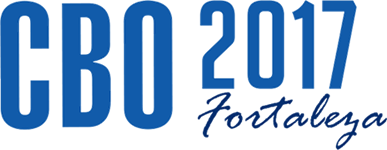
Sessão de Encontro com o Autor – Tema Livre
Código
P092
Área Técnica
Neuroftalmologia
Instituição onde foi realizado o trabalho
- Principal: FMRP-USP
Autores
- ANDRE MARCIO VIEIRA MESSIAS (Interesse Comercial: NÃO)
- José Galdino (Interesse Comercial: NÃO)
- Rodrigo Jorge (Interesse Comercial: NÃO)
Título
THE INFLUENCE OF DARK AND LIGHT ADAPTATION ON PHOSPHENE THRESHOLDS ELICITED WITH DTL ELECTRODES
Objetivo
To investigate the influence of dark, and light adaptation using 4 different chromatic backgrounds (white; blue; red and amber), on phosphene thresholds (PT) elicited with DTL electrodes.
Método
PT were psychophysically determined using a staircase method in 27 healthy subjects after 30 min dark adaptation, and after 5 min adaptation to 4 different full-field light backgrounds: red, amber, blue and white (in this order, all at 10 photopic cd/m2, ColorDome – Diagnosys LLC). DTL electrodes were used, and stimuli were generated (20 Hz, square waves) using an electric stimulation system (Okuvision - Germany).
Resultado
Mean PT found after dark-adaptation was statistically significant higher (P < 0,05) than after light-adaptation, no significant differences were found between red, amber and blue, but PT after white background adaptation was significantly lower than with the other colors. The mean PT in the dark was 316.9 ± 10.1 µA, and 190 ± 6.5 µA; 188.3 ± 8.0 µA; 185.4 ± 8.1 µA; and 170.7 ± 5.8 µA for red, amber, blue and white background respectively.
Conclusão
These results suggest that the human retina requires higher electrical current to elicit visualization of phosphenes when adapted to darkness, and also, that light adaptation with a white background appear to reduce PT more than red, amber or blue backgrounds.












